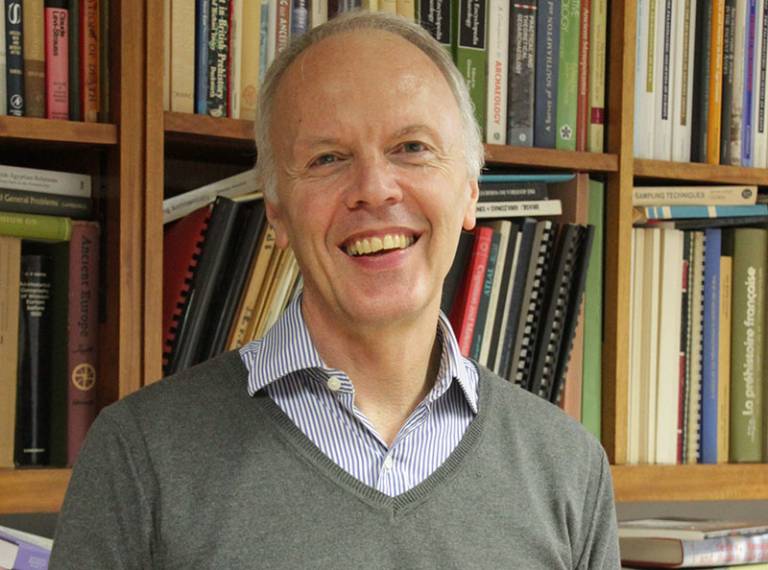Stephen Shennan awarded the RAI Huxley Medal 2021
30 November 2021
Stephen Shennan (UCL Institute of Archaeology) has been awarded the Royal Anthropological Institute's Huxley Medal for 2021 and invited to give this year's Huxley Memorial Lecture on 14 December.

This distinction was established in 1900 in memory of Thomas Henry Huxley (biologist and anthropologist) and is the highest honour the Royal Anthropological Institute (RAI) bestows. It is awarded annually to a scientist of any nationality who is distinguished in any field of anthropological research in the widest sense.
The Memorial Lecture is normally delivered at a special meeting of the Royal Anthropological Institute in the Autumn Term and is followed by the presentation of the medal. The Lecture is normally published by the RAI.
Stephen's lecture, which will take place on Tuesday 14 December at 3pm, is entitled 'Population and the dynamics of culture change'. The event is free but places must be booked in advance. Registration details are available here.
Lecture abstract
In a paper published in Current Anthropology in 2000, I argued that we should see the changes documented in the archaeological record as the result of processes of cultural ‘descent with modification’, by analogy with Darwin’s term for biological evolution. I proposed that understanding these changes required archaeologists to return to many of the issues raised by the culture-history agenda rejected 30-40 years previously and largely despised ever since. I suggested that the single most important factor in understanding culture change was population dynamics. First, because past populations had been much more dynamic, in terms of processes of expansion and contraction, than had been appreciated. Second, this mattered because many of the skills involved in artefact production were acquired by children from their parents or other close relatives of the older generation, so, if a particular local population expanded, then so would the artefact forms associated with it; correspondingly, the opposite would be the case if the population declined or disappeared. The importance of this link between cultural and demographic patterns, had almost certainly been underestimated.
In the intervening 20 years there has been an explosion of theoretical and empirical work addressing the relationship between cultural and demographic patterns, using new lines of evidence and novel perspectives. In this lecture, I will review some of that work, with a focus on areas where I have been involved, in particular the spread of farming into Europe and its aftermath, where I will show the way in which new methods and sources of evidence have changed ideas and in doing so borne out some of my suggestions and modified others.
 Close
Close

